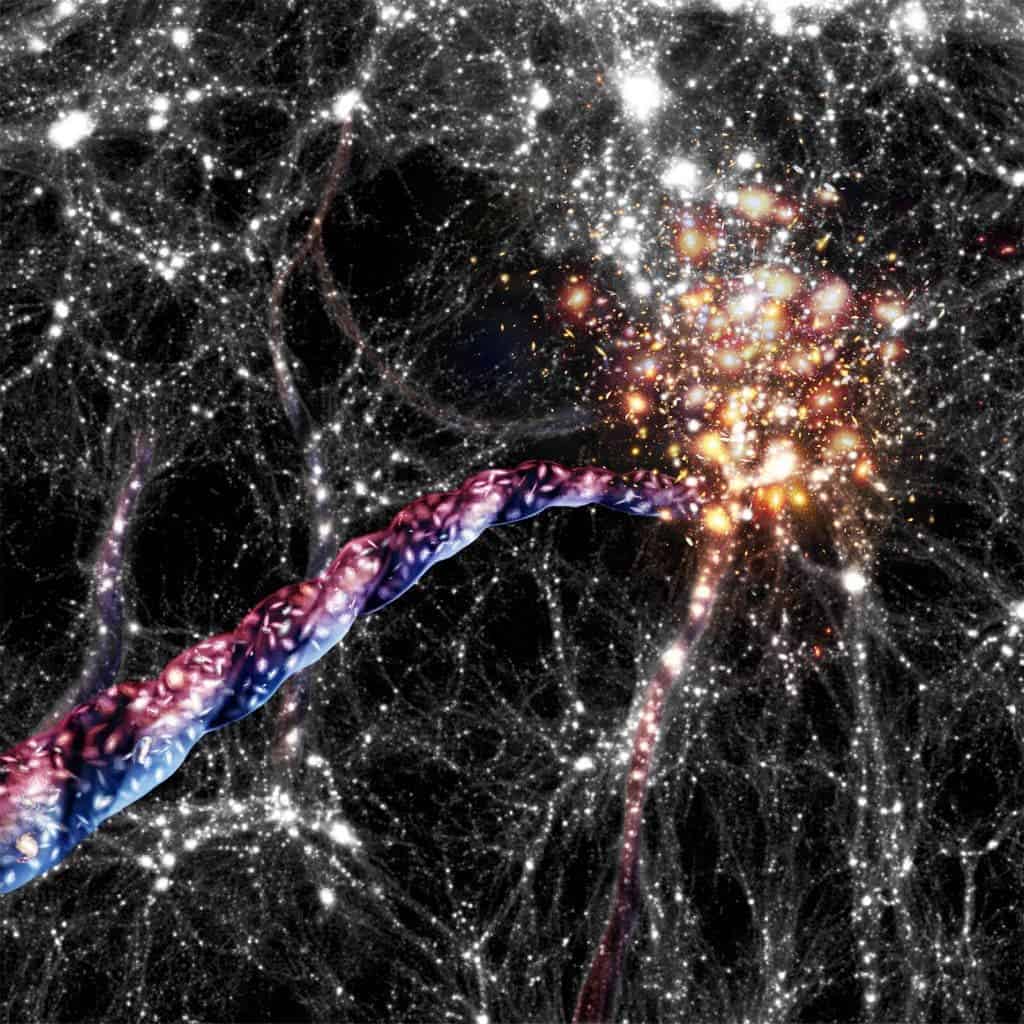Many things in the universe spin, at pretty much every scale you can imagine — from particles in the quantum scale to hurricanes and 0f course, planets and stars. However, this physical phenomenon is not well-explored on the cosmic scale — at the megaparsec scale, we’re not really sure how what spins.
In a study published in Nature Astronomy, physicists used data from Sloan Digital Sky Server’s to test an idea: what if galaxy filaments, the largest known structures in the universe, consisting of massive galaxy superclusters, are actually spinning?

It may sound weird to think that galaxies as a whole are moving — let alone spinning. They do move with respect to the universe’s expansion, and also on a smaller scale. We know our galactic neighborhood, some galaxies are mere satellites compared to their “mother” galaxy, like our Milky Way. We live in the Laniakea supercluster, where our big family is being pulled by the Great Attractor, the densest region of the cluster.
We can only observe some parts of the universe, due to our position in the universe and in the Solar System. In a way, we are too small to see the great vastness of the universe. So the filaments we can observe are seen in the parts of the sky visible from our cosmic neighborhood.
To compensate for this, astronomers also study such processes using computer simulations. The most famous such simulation of the Universe’s large-scale structure is called the Millennium Simulation — which used more than 10 billion particles to trace the evolution of the matter distribution in a cubic region of the Universe over 2 billion light-years on a side. The Millennium Simulation shows the dark matter distribution across the universe, forming a cosmic web interconnecting more than 10 billion particles. It is good to imagine what the big picture looks like.

In a recent study, researchers looked at the rotation movement of galaxy filaments — “bridges” that connect the cosmic web, connecting galaxies to each other.
“By mapping the motion of galaxies in these huge cosmic superhighways using the Sloan Digital Sky survey—a survey of hundreds of thousands of galaxies—we found a remarkable property of these filaments: they spin,” says Peng Wang, first author of the now published study and astronomer at the AIP.
Wang and colleagues looked at the galaxy filament cylinders which are horizontal compared to our position. They separated the cylinders into two regions to distinguish whether galaxies are coming away from us, in region A, or towards us, in region B. If that’s a simultaneous event the rectangle is actually the cylinder showing the rotation of the structure. Indeed, these structures appear to be rotating.
“Despite being thin cylinders—similar in dimension to pencils—hundreds of millions of light-years long, but just a few million light-years in diameter, these fantastic tendrils of matter rotate. On these scales, the galaxies within them are themselves just specks of dust. They move on helixes, or corkscrew-like orbits, circling around the middle of the filament while traveling along with it. Such a spin has never been seen before on such enormous scales, and the implication is that there must be an as-yet-unknown physical mechanism responsible for torquing these objects,” says Noam Libeskind, initiator of the project at the AIP.
The rotation is like a helix — the galaxies not only rotate around the axis, but they also move along the cylinders. It was estimated that filaments that contain more massive galaxy clusters at the end of the filament tend to have stronger rotational signals than those less massive. That is an important observation because it makes the hypothesis distinguishable to the universe’s expansion.

Overall, the work detected 17,181 filaments. Most of the galaxies are within nearly 30 billion billion km from the filament axis, while the cylinder’s radius is twice this size. Despite the impressive result and the numerous filaments observed, it does not mean every single cosmic web has a spin, that is because we don’t have enough galaxies to represent the whole universe. Until we get more data, the study has provided the first actual evidence for such an object and that is already stunning.









